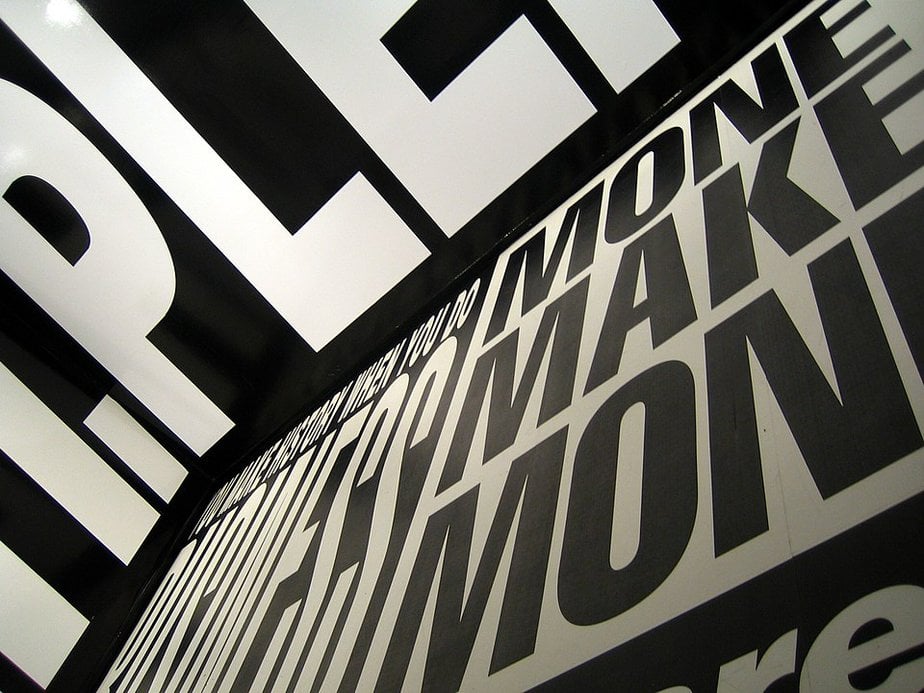Barbara Kruger is a prominent American artist known for her thought-provoking and politically charged works. Her signature style involves bold, black-and-white text superimposed on striking red backgrounds.
Through her art, Kruger addresses themes of power, consumer culture, and identity, challenging viewers to question societal norms and the influence of mass media.
Barbara Kruger’s philosophy and style converge to create provocative and politically charged art.
Her work combines black-and-white imagery with bold red text, challenging viewers to confront issues of power, identity, and consumerism.
Kruger’s art embodies a feminist perspective and questions cultural norms. Her work often features declarative statements, urging viewers to contemplate the impact of mass media and advertising.
Kruger’s distinctive style and uncompromising philosophy have made her an influential figure in contemporary art, pushing boundaries and sparking critical discourse.
Let’s look at the top artworks of Barbara Kruger
You Invest in the Divinity of the Masterpiece
You Invest in the Divinity of the Masterpiece (1982) by Barbara Kruger features bold text on a red background.
It critiques the commodification of art and the cult of the masterpiece, prompting viewers to reflect on the relationship between commerce and creativity. Kruger’s work raises questions about the value and perception of art in the contemporary world.
Power Pleasure Desire Disgust
Power Pleasure Desire Disgust (1997) is a striking artwork by Barbara Kruger. It features her signature black-and-white imagery and bold text.
The piece delves into the complex interplay of human emotions and societal influences. Kruger’s provocative juxtaposition of these words in a grid format encourages contemplation of the tension between personal desires and societal pressures, inviting viewers to explore the nuances of power dynamics.
It’s a Small World But Not if You Have to Clean It
It’s a Small World But Not if You Have to Clean It (1990) is a powerful artwork by Barbara Kruger. This piece features her characteristic bold text on a red background.
It critically addresses the hidden labor and inequalities behind seemingly global and interconnected systems, emphasizing the disparities inherent in society and challenging viewers to consider the often unseen aspects of the world.
You Are Not Yourself
You Are Not Yourself (1981) by Barbara Kruger is a thought-provoking artwork featuring bold text over a found image.
The piece challenges identity constructions in consumer culture, urging viewers to contemplate the impact of external influences on individuality, prompting reflection on the role of advertising and societal pressures in shaping one’s sense of self.
Know Nothing, Believe Anything, Forget Everything
Know Nothing, Believe Anything, Forget Everything (1987) by Barbara Kruger is a striking artwork.
It features her signature red, white, and black text overlaying an image. The piece critiques mass media’s influence on society, encouraging viewers to question the information they consume and the nature of belief in an era of information overload and manipulation.
Money Can Buy You Love
Money Can Buy You Love (2017) is a thought-provoking artwork by Barbara Kruger.
Combining her distinctive black-and-white text and red background, the piece critiques the commercialization of emotions and relationships, challenging the notion that love can be reduced to a commodity. Kruger’s work prompts reflection on the complexities of human connection in consumer culture.
The Globe Shrinks
The Globe Shrinks (1990) by Barbara Kruger is a compelling artwork featuring her bold, juxtaposed text and imagery.
The piece scrutinizes the globalizing impact of media and technology, highlighting the paradox of an interconnected world that also seems to diminish personal space and privacy. Kruger’s work provokes contemplation of the consequences of a shrinking world.
When I Hear the Word Culture, I Take Out My Checkbook
When I Hear the Word Culture, I Take Out My Checkbook (1985) is a seminal work by Barbara Kruger.
It critiques the commercialization of culture and art, highlighting the commodification of creativity. With bold text on a red background, Kruger challenges societal values and prompts reflection on the relationship between money and cultural expression.
I Shop Therefore I Am
I Shop Therefore I Am (1987) by Barbara Kruger is a provocative artwork featuring her iconic black-and-white text on red background.
This piece critiques consumerism and its impact on identity, suggesting that modern self-worth is often tied to materialism. Kruger’s work prompts viewers to contemplate the link between shopping and self-identity in contemporary society.


